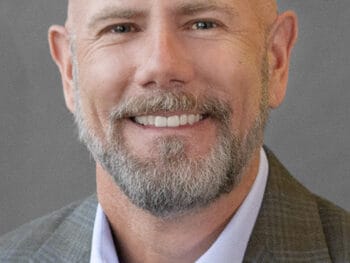Nova Scotia Fisherman 19 Times More Likely to Be Killed at Work
Nova Scotia fishermen are 19 times more likely to be killed at work than working Nova Scotians in general, according to Workers Compensation Board of Nova Scotia (WCB) statistics.
In light of a recent Transportation Safety Board (TSB) report, it’s a somber reflection on the desperate need for cultural change in the province’s fishing sector.
“The number of fatalities and injuries in the fishing industry is completely unacceptable,” said Stuart MacLean, chief executive officer of the WCB. “This is a proud, vibrant industry at the very core of our heritage. But it has a dark side. That dark side is the perceived acceptability of a fatal workplace hazard. This must change.”
Together with partner organizations working for change in the fishing industry, the WCBreleasedastatisticaloverview recently in response to the TSB report, which was based on a three-year investigation into fishing safety in Canada. The report calls for focus and concerted action in all regions to reduce the unacceptable death toll.
About Half of Canada’s Fishing Deaths occur in Nova Scotia
Since 1999, according to the report, 154 people have died in incidents in the fishing industry nationally. Nova Scotia’s share in that death toll is staggering. Comparing the years 2007-2010, 41 people died across the country in workplace incidents at sea. During that same time period, using the same definition as used in the TSB report, 19 people died fishing in Nova Scotia – meaning this province had just under half of the country’s fishing fatalities.
Cultural Lack of Acceptance for Protective Equipment Major Problem
The Transportation Safety Board also made a number of recommendations that speak directly to the need for cultural change in Nova Scotia’s fishing sector. Among the findings was the lack of acceptance of personal protective equipment – such as floatation devices which are easy to wear while working. Some 25% of fatalities across the country, the report notes, occur when someone falls overboard and can’t get back on the vessel easily. And yet, many fishermen refuse to wear PFDs.
“There are many workable, affordable PFDs out there, but as the TSB report notes, there are underlying cultural barriers that keep people from wearing them,” said Stewart Franck, executive director of the Fishing Safety Association of NS. “Repeatedly we hear that the best PFD is one that is worn. Fishers, safety advocates, manufacturers and regulators must work together to identify equipment that is acceptable. This will save lives, better allowing for rapid retrieval of those who fall overboard. Not only is it the law, it clearly makes sense to use protective equipment when working on or near the water.”
Overcoming those cultural barriers requires industry-based support for change. That’s why the WCB is working with the FSANS and the Department of Labour and Advanced Education to raise awareness of the issue, the acceptance of the need for something different, and the long-term behaviour change to make it real.
“No matter what the job or where they work, all Nova Scotians have the right and the responsibility to keep themselves and each other safe,” said Minister Marilyn More, Labour and Advanced Education. “All workplace injuries and deaths are preventable and we must all play our parts to make safety second nature on every fishing vessel in the province.”
Rolling Out and Awareness Campaign
During the recent National Drowning Prevention Week, the WCB, FSANS, and Nova Scotia Labour and Advanced Education rolled out an awareness campaign about the need for change in the fishing industry. The campaign included print and radio ads featuring safety champions from the fishing industry – Leonard LeBlanc, a Cheticamp fisherman, and Marilyn D’Entremont, a widow from Pubnico whose husband, Lewis, tragically died while fishing for herring.
The fishing industry also has one of the highest injury rates overall in Nova Scotia. In 2011, about 330 people were hurt on the job in the sector and of those, 135 were serious injuries that resulted in time lost from work. Those numbers take not only a human toll, but a financial one, affecting WCB rates for the sector.
“If nothing changes, people will continue to die at work in this industry,” said MacLean. “Fishermen have faced dangerous conditions for far too long, and they are an important part of the solution to save lives in their industry.”
Author Michael B. Stack, CPA, Director of Operations, Amaxx Risk Solutions, Inc. is an expert in employer communication systems and part of the Amaxx team helping companies reduce their workers compensation costs by 20% to 50%. He is a writer, speaker, and website publisher. www.reduceyourworkerscomp.com. Contact: [email protected].
WORKERS COMP MANAGEMENT MANUAL: www.WCManual.com
Do not use this information without independent verification. All state laws vary. You should consult with your insurance broker or agent about workers comp issues.
©2012 Amaxx Risk Solutions, Inc. All rights reserved under International Copyright Law. If you would like permission to reprint this material, contact us at: [email protected].












